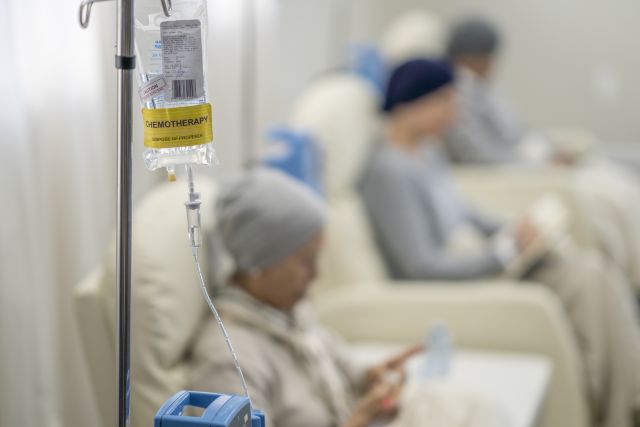Updated on January 17, 2024
Mantle cell lymphoma (MCL) is a type of cancer that begins when white blood cells called B-cells undergo mutations and begin to grow in uncontrolled and abnormal ways.
The goal of treating MCL is remission. Remission means the cancer is under control, and symptoms and signs are reduced (called a partial remission) or completely gone (complete remission). Complete remission should not be confused with cured, because there is always a chance that the cancer can return.
Below is a look at the different therapies used in the treatment of MCL and some of the factors that will be considered when building a treatment plan.
What are the treatment options for MCL?
Cancer therapies can be divided into two broad categories, localized therapies and systemic therapies. Localized therapies can be used to treat cancers that are contained within one location of the body. Surgery to remove a tumor or radiation therapy used to shrink a tumor are examples of localized therapies.
Systemic therapies are anti-cancer drugs that work against cancer cells throughout the entire body. Chemotherapy is the most common example. MCL is typically treated with systemic therapies. There are a few reasons for this:
- MCL tends to be aggressive. This means it tends to grow and spread quickly.
- MCL is often diagnosed at advanced stages. MCL may not cause any noticeable symptoms in early stages and can be easy to miss. Most cases of MCL are diagnosed at advanced stages, where the cancer has spread to multiple areas throughout the body.
Systemic therapies and MCL
A variety of chemotherapy drugs, immunotherapy drugs, and targeted therapies are used in the treatment of MCL. Here is a closer look at what those terms mean:
- Chemotherapy. Chemotherapy drugs are the most-used treatment for MCL. Different drugs have different mechanisms of action, but they work in generally the same way—they contain chemicals that damage cells as they grow and multiply. Because cancer cells grow and multiply quickly, chemotherapy drugs are effective at attacking cancer cells.
- Immunotherapy. Immunotherapies work in one of two different ways, depending on the drug being used and that drug’s mechanism. Some immunotherapies help the body’s immune system recognize and attack cancer cells. Others contain lab manufactured versions of antibodies, which attack cancer cells.
- Targeted therapy. Lymphoma cells have abnormalities in specific proteins and enzymes that allow them to grow at an abnormal rate. Targeted therapies block protein and enzyme abnormalities to slow the growth of cancer cells.
Another term to know is regimen. A regimen is a combination of multiple anti-cancer drugs taken at the same time—for example, multiple chemotherapy drugs, or chemotherapy drugs taken in combination with an immunotherapy drug (sometimes called chemoimmunotherapy).
Localized therapies and MCL
Although MCL is typically treated with systemic therapies, localized therapies can also play a part in treatment.
- Surgical biopsy. This is the surgical removal of a diseased lymph node. It is recommended during diagnosis for lymphoma. Once the diseased lymph node is removed, it is sent to a laboratory for testing.
- External beam radiation (also called involved-site radiation therapy). This type of radiation therapy uses carefully directed beams of radiation to destroy cancerous cells. These beams can be directed at cancerous lymph nodes or tumors. This may be a treatment option for early-stage MCL, and it may be combined with chemotherapy or other systemic therapies.
CAR T-cell therapy
CAR T-cell therapy (chimeric antigen receptor T-cell therapy) is a type of immunotherapy that involves collecting T-cells (a type of white blood cell) from the person being treated for MCL. Proteins called receptors are added to the collected T-cells in a lab and then infused back into the blood of the person with MCL. The new receptors allow the modified T-cells to better target and destroy lymphoma cells. CAR T-cell therapy is typically used when MCL has relapsed, and it is not typically used as an initial treatment.
Autologous stem cell transplant
This is an aggressive treatment option that can put a significant physical and mental burden on the person being treated. It is typically only used for younger patients who are in good health.
It involves collecting healthy stem cells from the bone marrow of the person being treated. These collected stem cells are stored while a person undergoes high doses of chemotherapy to eradicate the MCL throughout the body. This process will leave a person with a very low level of white blood cells. The stored stem cells are then reintroduced into the body, where they are used to replenish the supply of white blood cells.
Deciding on a treatment
If you are living with MCL, your best source of information about treatment options will be your healthcare team. Some of the factors that will need to be considered are the stage of the cancer, if and where the cancer has spread, the results of biopsies and other tests, your age, overall health, and medical history (including any previous treatment for cancer).
Quality of life is another important consideration. Cancer treatments like those described above cause side effects, and it is important to understand what side effects to expect and what life will be like during treatment.
It’s also important to understand what comes after a treatment. Even in remission, MCL is not considered cured. It will require monitoring, and it may require therapies to help prevent the cancer from returning.






